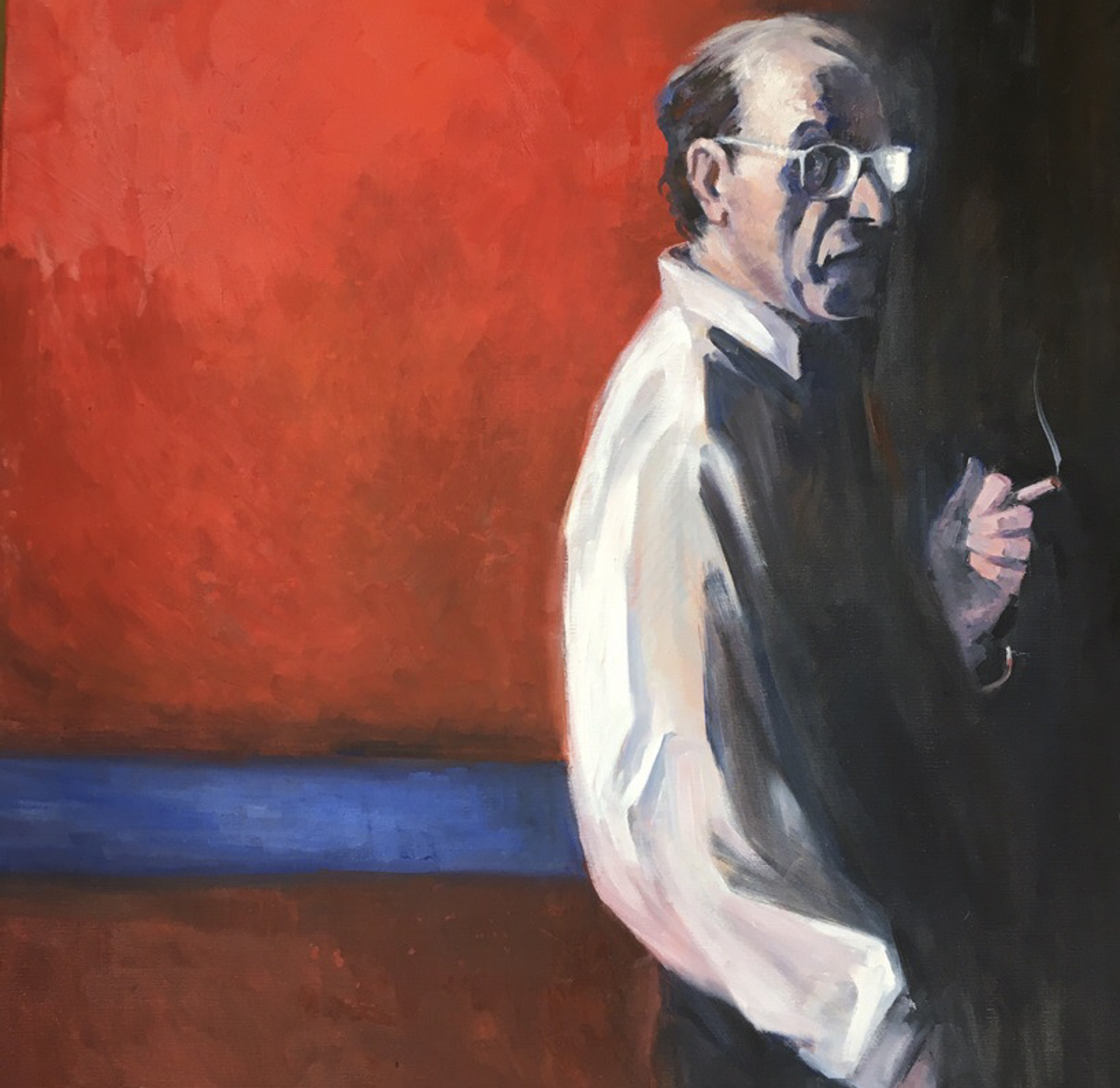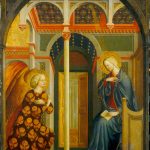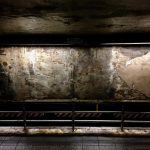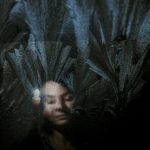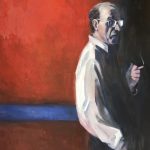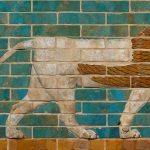“Mark Rothko” by painter Denisova Olesya Alexandrovna. Photo provided by Wiki Commons.
TEXT BY JANE POTTHAST
When I see a Rothko painting, the feeling is akin to that moment between waking and sleep when one is delayed—happily—in an absence of category. A purity of breath and stillness without effort. A cessation of being. But to be transported to these realms by his art, I must see the original painting in person. Otherwise the image has no effect.
And this is the enduring strength of Rothko in the age of the smartphone.
Art lovers are familiar with the basics: Latvian-born American painter Mark Rothko is famous for what is known as Color Field Painting. Though a traditionally trained artist, he painted abstract compositions of simple form, opting for layered colors and simple shapes. MoMa’s Rothko page describes “floating zones of color over colored grounds.” These color zones seem to float in a flowering void. Rothko’s large blocks of unusual hues are often softened and blurred at the edges, giving the impression that they hover in space—a floating fragment in a synesthetic dream. The paintings take over a viewer’s vision in a way that, even if only for a moment, she is unaware of anything but color. This creates a sensation of an expansive, pure space.
Recently the Yale gallery reopened, and they have several Rothko’s I have never seen before. My favorite thing to do is wander galleries, but since moving to Connecticut last summer during the pandemic, the museums have been closed, and I was ignorant as to the extent of Yale’s Rothko acquisitions. Once reopening happened, I booked a ticket. Upon wandering the rooms, I stumbled across No. 3 and Untitled hanging alone, together, on a dedicated wall.
The same familiar Rothko delight washed over me: Here is a place where the daily overload of sensory stimulation—scrolling through Instagram, the Zoom screen, TikTok, endless and fleeting imagery, even the visual fatigue of walking through an art gallery—comes to a halt. Rothko makes work that, when encountered, leaves all perspectives converging into a singular sublimity. A simple radiance hangs there, and vision narrows into a fine point where the most abstract, formless of styles gives way to the most concrete of sensations: peace.
Though I find a peace in encountering Rothko paintings, they are not without force or drama. Rothko believed he could express the full range of human emotion in his works, from the ecstatic to tragic. Looking at them is to suffer the imperative of gravity—to fall into the thing. I find myself suspended, hanging between the earth and the sublime places towards which he reached, sometimes encased, floating, in a gentle radiance, and at other times inside a pure emotion, a drama or grief.
But either way, I call this peace—because it is an encounter with an emotion without the burden of our personal psychic and raw materials, our narratives or fantasies. Curator William Rubin said it well: “His colored rectangles seemed to dematerialize into pure light.” What makes this so significant for our contemporary experience is the visual cleansing. Constantly inundated with imagery, we find ourselves in what philosopher Jean Baudrillard famously called “the desert of the real itself.” We find ourselves in endless simulations, immersed in imagistic representations presented by our screens, without the actuality of being present to the event. We are always one remove away from the thing itself.
Pictures of Rothko’s paintings have never translated the spiritual weight of the works because the effect of sublime purity comes from his intense dedication to the paintings’ materiality. He spent years on each of his deceptively simple pieces. Each painting is a distinct blend of paints of his own invention, differing in application technique. One painting might show the use of the same color pigment, but each paint layer is created with a different binder—egg yolk, resin, hide glue—while another might use an entirely different glaze over a thin layer of traditional oil paint, and so on.
In a time where we now live most of our lives online, both the simplicity and intense materiality of Rothko’s work offers what we are coming to lose: Some things can only be known through presence, through the weight of their material impact. Rothko’s work reminds us that lack of visual stimulation offers something restorative: a cooling in the desert of the real.
Jane Potthast is a writer, student, and Ars Poetica poet based in New Haven, Connecticut. Jane has a B.A. and M.A. in comparative literature from Goldsmiths, University of London, and began further studies in religion and literature at Yale Divinity in September 2020. Jane prefers writing fiction, but regardless of the form or subject, she mostly approaches her work as a vessel for the exploration of spiritual themes. She hopes to channel the divine through her work, and repents often for spilling gin on her Bible.

